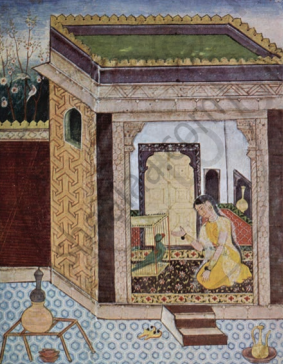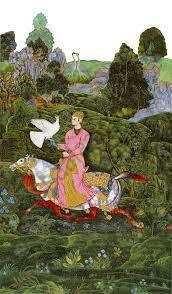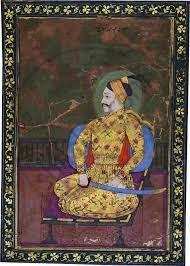Topics
Historiography : Development in the West
History : Applied History
Working of the Constitution
Historiography : Indian Tradition
The Electoral Process
Political Science : Working of the Indian Constitution
Applied History
Political Parties
History of Indian Arts
- What is ‘Art’?
- Indian Traditions of Visual Arts (Drik Kala): Painting
- Prehistoric Paintings
- Mural Paintings and Cave Painting
- Folk Styles of Paintings
- Classical Styles of Painting
- Miniature Paintings in Manuscripts
- Modern Indian Paintings
- Indian Traditions of Visual Arts (Drik Kala): Sculpture Art
- Indus Civilization Sculpture
- Folk Styles of Sculptural Art
- Classical Styles of Sculptural Art
- Indian Iconography
- Indian Traditions of Visual Arts (Drik Kala): Architecture and Sculpture
- Rock-cut Architecture
- Temple Architecture
- Indo-Islamic Architecture
- Indo-Gothic architecture
- Indian Traditions of Performing Arts
- Indian Theatre
- Indian Music
- Indian Dance
- Present Scenario of the Performing Arts
- Art, Applied Art, and Professional Opportunities
Social and Political Movements
- Movement
- Important Movements in India
- Tribal Movement
- Farmers Movement
- Worker's Movements
- Women’s Movement
- Environment Movements
- Consumer Movement
Mass Media and History
Challenges Faced by Indian Democracy
Entertainment and History
Sports and History
Tourism and History
Heritage Management
History - Imperialism
History - 20th Century Age of conflict
History - Emancipation of Asia and Africa
History - World after World War 2
Political Science
Geographical discoveries and colonization
- Concept for Geographical Discoveries and Colonization
Africa
- Imperialism - Africa
Asia: India, China, Japan
- Concept for Asia: India, China, Japan
Dictatorships in Europe, Second World War and world
- Concept on Dictatorships in Europe
- Concept for Second World War and World
First world war
- Concept on First World War
The League of Nations
- Concept for the League of Nations
Russian Revolution
- Concept for Russian Revolution
United Nations Organization
- Concept for United Nations Organization
Africa
- Emancipation of Africa
Asia
- Emancipation of Asia
Globalization
- Globalization After World War II
Scientific and Technological Progress
- Scientific and Technological Progress After World War II
Cold war
- Formation of the Cold War
Social Diversity and Democracy
- Social Diversity
- Coccept for Caste/Race and Democracy
- Concept for Language and Democracy
- Cocnept for Religion and Democracy
- Concept for Gender and Democracy
- Concept for Democracy and Diversity
Challenges to Democracy Remedial Measures to the Challenges
- Concept for Challenges to Democracy Remedial Measures to the Challenges
Internal work
Democracy
- Democracy - Meaning, Types and Characteristics
Political Parties and Types
- Political Parties
- Importance of Political Parties
- Major National and Regional Parties in India/ Types of Political Parties
- The Mughal School of Painting
- The Deccan School of Miniature Painting
Notes
Miniature Paintings in Manuscripts:
- The term 'miniature' comes from the Latin word 'minimum,' which means 'red lead paint.'
- Manuscript illustrations were methodically conceived in thematic sets.
- Paintings from the medieval period have earned a generic name, for example, miniature paintings, owing to their relatively smaller size.
- These miniature paintings were hand-held and observed from a closer distance due to their minutiae.
- A large section of paintings is appropriately referred to as manuscript illustrations as they are pictorial translations of poetic verses from epics and various canonical, literary, bardic, or music texts (manuscripts), with verses handwritten on the topmost portion of the painting in clearly demarcated box-like space. Sometimes, one finds the text not in the front but behind the work of art.
- Early manuscripts contain miniature paintings that exhibit Persian influence.
1. The Mughal School of Miniature Painting:
- The birth of the Mughal School of Painting is seen as a turning point in Indian painting history.
- The Mughal School of painting emerged under the reign of Akbar in 1560 CE, when the Mughal empire was established.
- Two Persian masters, Mir Sayyed Ali and Abdul Samad Khan, who had previously worked for his father Humayun, were hired to run Nigaar Khana, a painting studio, at the start of his reign.
- The most skilled Persian and indigenous Indian artists of that time. This integrated composition of Indo-Persian artists led to the development of a unique style in this period.
- Paintings recorded and documented significant events, personalities, and interests of the emperors. These were meant to be seen by the royals only. The paintings were made to suit the sensitivity of the royals or were often made for intellectual stimulation. The paintings were a part of manuscripts and albums.
- Akbar envisioned cultural integration and commissioned the translation of several revered Hindu texts.
- The first piece of the Mughal School appears to be an illustrated manuscript of the Tutinama that is housed in the Cleveland Museum of Art in the United States.

Tutinama: The Girl and the Parrot, 1580-1585, Chester Beatty Library, Dublin
- Mughal paintings reached their pinnacle during Jahangir's reign. The use of decorated margins around paintings was one of the distinct trends that emerged during this time period.
- The tone of Mughal art changed dramatically during Shah Jahan's reign. He discouraged artists from using charcoal in their drawings and instead encouraged them to draw and sketch with a pencil.
2. The Deccan School of Miniature Painting:
- The history of Deccani Painting can largely be constructed from the late sixteenth century until the 1680s - the time when the Mughals conquered the Deccan.
- A highly developed and distinctive school of court painting emerged in the kingdoms of Bijapur, Golconda, and Ahmadnagar.
- Its distinctive sensuality and vibrant colours are strongly reminiscent of local aesthetics. The school emphasised thick composition and made an effort to convey a romantic air, which always came over in an idiom that was eloquently natural and vibrant.

Sultan I brahim Adil Shah II Hawking

Sultan Abdullah Qutb Shah of Bijapur, National Museum, New Delhi, India.
|
Tutinama: The Girl and the Parrot, 1580-1585, Chester Beatty Library, Dublin |
|
Sultan I brahim Adil Shah II Hawking |
Sultan Abdullah Qutb Shah of Bijapur, National Museum, New Delhi, India. |
If you would like to contribute notes or other learning material, please submit them using the button below.
Related QuestionsVIEW ALL [1]
Read the following extract and answer the questions:
| Western Style of Painting: In the British period, Indian artists came under the influence of the European style of painting. An art school was established under the leadership of James Wales, a Scottish artist, in the time of Savai Madhavrao Peshwa in Shaniwar Wada in Pune. He had done a portrait of Savai Madhavrao and Nana Phadnavis. Gangaram Tambat, a Marathi artist who worked with Wales deserves a special mention here. He had made drawings of the rock-cut caves at Verul and Karle. Some of his drawings are preserved in the Yale Centre of British Art at Yale University. The exact portrayal of the object in the painting is characteristic of the European style. A number of renowned artists were trained in the J. J. School of Art and Industry, which was established in 1857 C.E., offering courses in the European style of painting. Pestonji Bomanji, alumni of this school made replicas of Ajanta paintings. |
- Which Marathi artists worked along with James Wales in the art school established by Shaniwar Wada in Pune?
- Name the location where some of the drawings of Gangaram Tambat are preserved.
- Write in detail about the Western style of painting.
